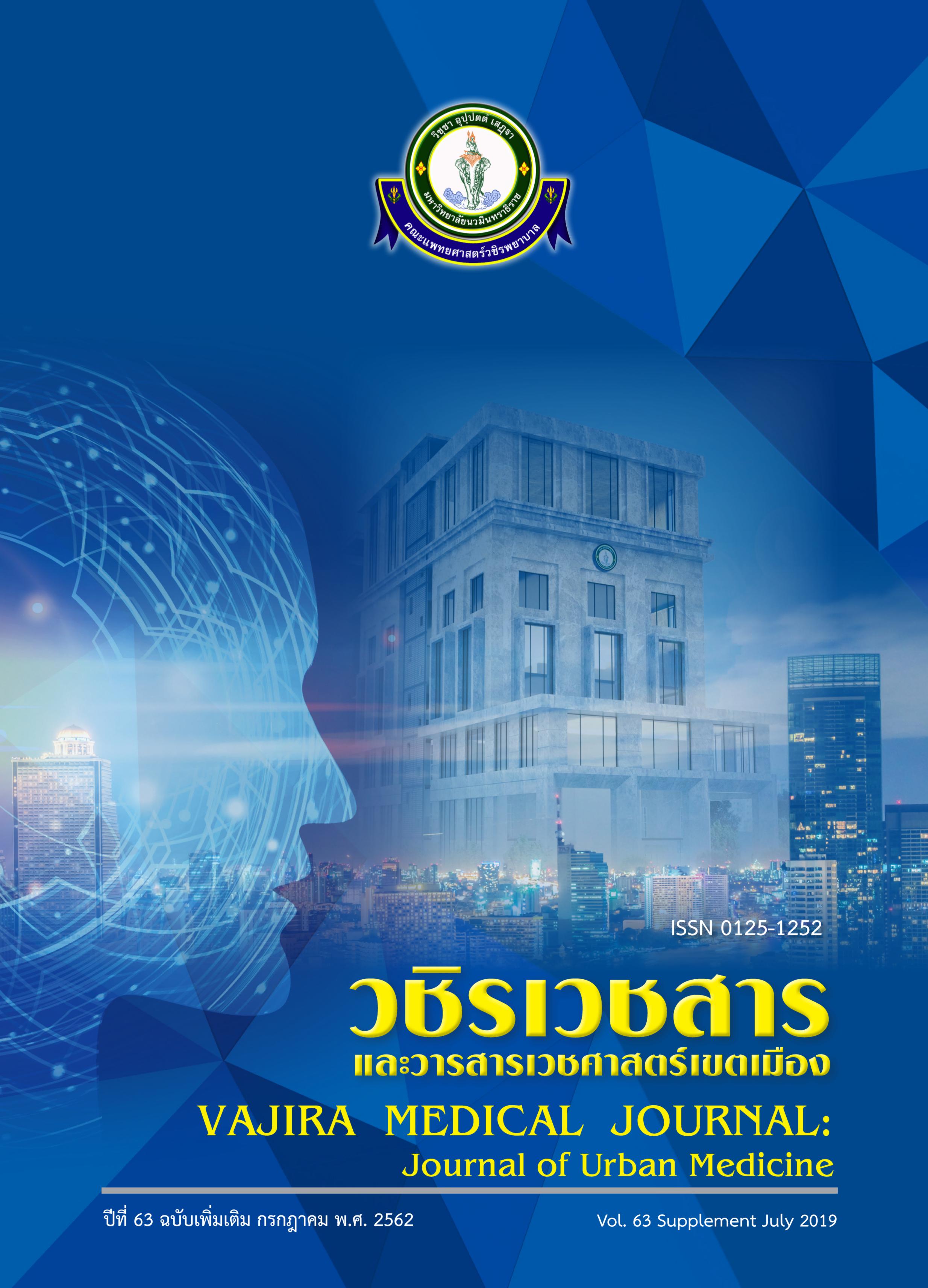Development and Validation of A Scale Measuring Health Literacy for Breast and Cervical Cancer Prevention with Women’s Reproductive in Bangkok Metropolitan
Main Article Content
Abstract
Objective: The purposes of this study were to develop and validate a Thai-version scale measuring of health literacy for breast cancer and cervical cancer prevention (HLM-BCC). Applying the health literacy by Sorensen’s framework that covered validated and reliability.
Methods: The samples were 592 Women’s Reproductive living in Bangkok Metropolitan using cluster random sampling such as suburb, urban fringe, and inner city. The HLM-BCC was examined for content validity by five experts, then it was tried out for reliability with Cronbach’s alpha. The HLM-BCC was examined by descriptive statistics, Pearson’s correlation coefficient, and confirmatory factor analysis.
Results: The results showed that the most participants aged average 43.24 years old, 56.10% of the participants has been breast self-examination and 37.20% of the participants has been cervical cancer screening. The mean of total health literacy was 4.27. The final version of the HLQFSC had 15 items, with the Cronbach’s alpha coefficient of 0.905. The confirmatory factor analysis showed that the fit statistics on fit indices were acceptable: χ2= 266.37, df = 79, CFI = 0.98, GFI = 0.94, TLI = 0.98, RMSEA = 0.062, and the 4-factors model was confirmed as well: 1) Assess health information 2) Understand health information 3) Appraise health information, and 4) Apply health information.
Conclusion: The Thai-version of the HLM-BCC has a good psychometric property. It can use for screening health literacy for breast and cervical cancer prevention with women’s reproductive.
Article Details
References
2. WHO. Cancer Cervix 2018 [Available from: https://www.who.int/cancer/prevention/ diagnosis-screening/cervical-cancer/en/.
3. National cancer institute T. Hospital-based cancer registry 2017: Pornsub printing Co., LTD; 2018.
4. National Cancer Institute Thailand. Hospital–based cancer registry annual report 2014. Bangkok: Pornsup Printing Co., LTD.; 2016.
5. Srisomboon C. Knowleage of cervix cancer Chaingmai University 2014 [cited 2019 23 March]. Available from: http://www.rtcog.or.th/html/articles_details.php?id.
6. Dewalt DA, Berkman ND, Sheridan S, Lohr KN, Pignone MP. Literacy and health outcomes a systematic review of the literature. JGIM. 2004; 19:1228-39.
7. Davis TC, Williams MV, Marin E, Parker RM, Glass J. Health literacy and cancer communication. CA A Cancer Journal for Clinicians. 2002; 52(3):134-49.
8. Manganello JA. Health literacy and adolescents: a frame-work and agenda for future research. Health education research. 2008; 23:840-7.
9. Sentell TL, Tsoh JY, Davis T, Davis J, Braun KL. Low health literacy and cancer screening among Chinese Americans in California: a cross-sectional analysis. BMJ Open. 2015; 5(1):1-9.
10. Yadollahi M, Siavashi E, Mostaghim S. The relationship between health literacy and patient participation in medical decision making among breast cancer patients. Archives of breast cancer. 2018; 5(4):183-8.
11. Oldach BR, and Katz ML. Health literacy and cancer screening: a systematic review. patient education and counseling. 2014; 94(2):149-57.
12. Li C, Alicia K. Matthews, Dong X. The influence of health literacy and acculturation on cancer screening behaviors among older Chinese Americans. Gerontology & geriatric medicine. 2018); 4:1-8.
13. Davis TC, Crouch MA, Long SW, Jackson RH, Bates P, George RB, et al. Rapid assessment of literacy levels of adult primary care patients. Family medicine. 1991; 23(6): 433-5.
14. Sentell T, Braun KL, Davis J, Davis T. Colorectal cancer screening: low health literacy and limited English proficiency among Asians and whites in California. Journal of health communication. 2013; 18(1):242-55.
15. Ali M, Mahmoud T, Fatemeh R, Ali AS, Katayoun J, Mahdi E, et al. Health literacy for Iranian adults (HELIA): Development and psychometric properties. PAYESH. 2014; 13(5):589-99.
16. Baker DW, Williams MV, Parker RM, Gazmararian JA, Nurss J. Development of a brief test to measure functional health literacy. Patient Educ Couns 1999; 38:33-42.
17. Wongharimat S, Boonchuay K. Indicators to measure health literacy for cervical cancer screening and behavioral intention to cervical cancer screening. Journal of health science 2018; 27(6):1058-68.
18. Health Education Devision. Health Literacy Bangkok: Newthammada Printing Ltd; 2011.
19. Sorensen K, Van den Broucke S, Fullam J, Doyle G, Pelikan J, Slonska Z, et al. Health literacy and public health: A systematic review and integration of definitions and models. BMC Public Health 2012; 12:80:p.1-13.
20. Hair JF, Black WC, Babin BJ, Anderson RE. Multivariate data analysis: A global perspective. New Jersey: Pearson Prentice Hall; 2010.
21. Stevens J. Applied multivariate statistics for the social sciences. 2nd ed. Hilldale: Erlbaum; 1992.
22. Fornell C, Larcker DF. Evaluating structural equation models with unobservable variables and measurement error. Journal of Marketing Research. 1981; 18(1):39-50.
23. Nunnally JC, Bernstein IH. Psychometric theory. 3rd ed. New York: McGraw-Hill; 1994.
24. Polit DF, Beck CT. Nursing research: Principles and methods 7th ed. Philadelphia: J.B. Lippincott.; 2004.

